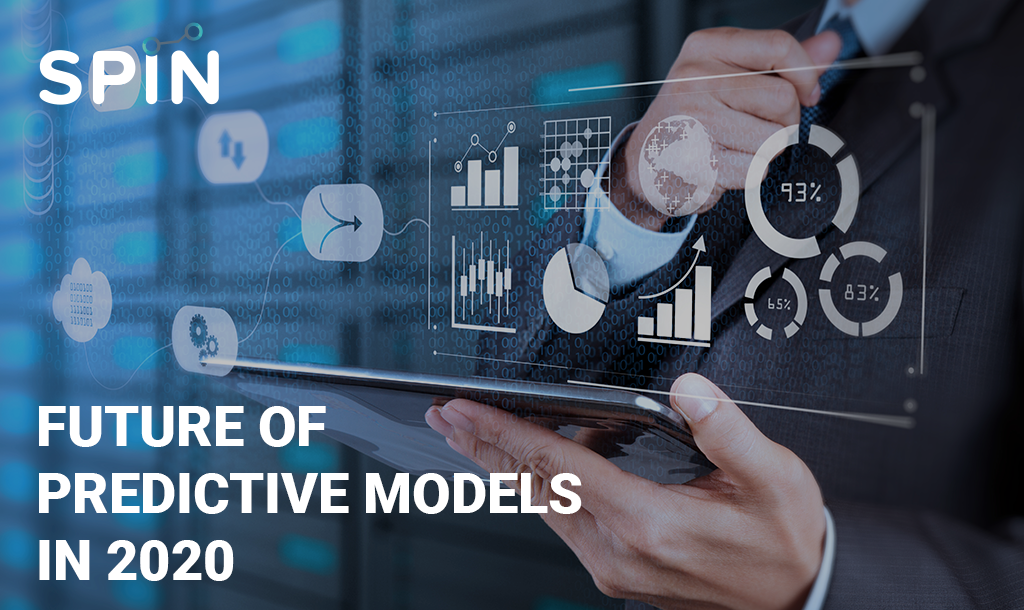PREDICTIVE MODELS 2020
Be more accurate towards forecasting your data. Know the hidden patterns within your data to explain statistical abnormalities and explore the relation behind the unexpected Customer Patterns and sudden fluctuations in the audience segmentation metrics.
Here are a few Predictive Models that make it happen:
1. CUSTOMER SEGMENTATION:
Dividing customers into groups based on common characteristics is Customer Segmentation.
Knowing your customers and targeting them in the most relevant way to boost Customer Retention and Customer Satisfaction is the primary motive for any business.
Get Answers for every doubt you have related to your customers using this Model:
- Know your customer requirement before launching a new product
- Target specific Customer Branding
- Rebrand new customers
Customer Demographics, Customer Buying Behavior, Customer Interests, and Customer Profiling are some of the additional benefits of the Customer Segmentation model that businesses look forward too.
2. CROSS SELL AND UP SELL MODELS:
Looking for quick wins and easy growth?
Upselling and cross-selling are considered to be the two most effective ways to boost revenues for retailers. Upsell is used when business owners want to convince their customers to purchase a more expensive product/ service, while salespeople use cross-sell to encourage consumers to buy more products based on instinct.
Here is the strategy used by Cross-Sell and Up-Sell model:
- Loyal Clients Feedback First
- Business Quarterly Reviews
- Gathering testimonials and Case studies
- Blog sharing
- Trial and error
- Time to time discounts and Offers
- Know your Needs
- Employee Retention
3. CHURN MODELS:
Customer Churn Prediction
Churn Rate defines the percentage of Customer Retention for your products/services. Customer Churn prediction tasks will often use customer data to determine:
- Time spent on a company website
- Products/ services purchased
- Demographic information of users
- Links clicked
- Text analysis of product reviews
Types of churn Models:
- Define Metrics with Consumer data
- Shifting insights based on Outputs
- Adding machine Learning to Churn
4. SENTIMENT ANALYSIS:
Discover Customer emotional connect towards a product/service and boost Brand Reputation Management with Sentiment Analysis.
Sentiment analysis and opinion mining find numerous applications in e-commerce, marketing, advertising, politics, and research, with:
- Text Polarity
- Sentiment ranking
- Feature Sentiment Analysis
5. PRICE PLANNING AND ANALYSIS:
It is important to analyze the pricing situation to develop a Price planning and Analysis strategy to:
- Evaluate new product ideas
- Test marketing
- Introduce strategy
- Add Positioning
Analyzing the pricing strategy benefits the business by:
- Establishing the responsiveness of the market to price
- Determining cost
- Analyzing competition
- Assessing legal constraints
6. CUSTOMER SPENDING PATTERN ANALYSIS:
Customer spending patterns can be divided into regular spend pattern and lifestyle spend patterns.
- Regular spending means basic necessities of life,
- Lifestyle spending means spending on a computer, internet, car, cell phone, etc.
- Cultural
- Social
- Psychological
- Personal
7. PRODUCT RECOMMENDATION:
Product recommendations will work for ECommerce Businesses where there are unfriendly sales assistants to help customers with each step of their shopping journey.
Product recommendation engines fall into 2 main categories:
- Unpersonalized
- Personalized
8. IMPACT ANALYSIS OF SALES PROMOTION:
What are the promotional offers that has the highest impact at present? This question is relevant for every product/service-based business.
Promotional analysis is a technique of analyzing success or failure of a promotion using past time series data.
Types of Promotion Analysis include:
- Quantity/Product concession
- Price discount
- Ads
- Shipping promotion
9. CONSUMER CHOICE MODEL:
The consumer choice model is used to determine the buying decisions for several commodities with different results. Such models take into consideration different families, classes, attitudes, etc.
The basic steps for Consumer Choice Model include:
- Recognition
- Information search
- Alternative evaluation
- Purchase decision
- Post-purchase behavior
10. AD OPTIMIZATION
Some ads do well than others and generate more clicks, revenue, conversions, higher conversion ratio, etc. Based on these features, you can display the better performing ads more and show a red flag to the poor ones to boost the ROI.
The Ad Optimization models operate by:
- Adding a call-to-action model
- Adding emotional content
- Using Ad Extensions
- Trying dynamic keyword insertion
11. PROPENSITY MODEL
The method of predicting the possibility that visitors, customers, or leads to conduct certain actions are termed as Propensity Analysis.
Based on Propensity modeling, marketing teams forecast the likelihood of whether a lead will convert to a customer, or will churn. Add to it, propensity modeling also helps to predict whether an email recipient will unsubscribe or not.
Here is how Propensity Modeling works:
- Determining the features
- Preparing the propensity model
- Calculating your Propensity scores
12. TIME SERIES AND CASUAL ANALYSIS:
Time Series Analysis is used to clarify, track, and forecast casualty behaviors of customers. Whatever time-based patterns business experiences, Time Series Analysis can be used to determine it.
Time Series models can be applied to the following applications:
- Business- Web traffic, Supply Chain, etc.
- Finance- Stock option, econometrics, etc.
13.FRAUD MANAGEMENT AND PREVENTION:
Spotting potentially fraudulent behavior and identifying unusual patterns of behavior consistent is termed as Fraud Management and Prevention.
Fraud Prevention models provide:
- Expert alert scenarios
- Real-time integration
- Quick roll-out
- Audited workflow and case management
- High performing testing tools

